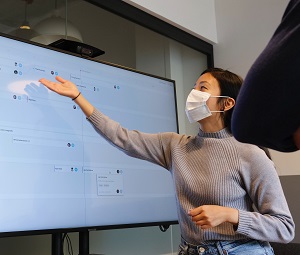
Janet Six asked me to contribute to an ‘Ask UXMatters’ panel discussion on the topic of how to create presentations for development teams versus executive teams. I shared my thoughts, which focus on how the teams will want to know some of the same things, and some different things – which I give examples of in the article. I also touched on the topic of how much evidence you will need to present, depending on your audience, the research question and your findings. Here is an extract from the discussion:
“For all presentations, it’s important to think about the needs of the people you’re presenting to,” replies Caroline. “Typically, the development team and the executive team want to know some of the same things and some different things.
“A development team may want to know things such as the following:
- Which areas of our work are relevant to your work?
- Do these changes affect mostly content or mostly front-end development, or do they impact the back-end and architecture?
“An executive team may want to know things such as the following:
- Is this thing likely to deliver on the business case we’ve agreed on?
- Will it be ready for the launch date so we can safely align with our marketing plan?
“Both teams probably want to know the following:
- What do you want me to do on the basis of this presentation?
- When do I have to do it?
- How would that benefit the organisation?
“But the actions that a development team might take – such as building some software, making some changes to existing software, or planning the activities for the next sprint – are rather different from the ones that the executive team might take – such as agreeing to a future plan, providing funding, or deciding to accept or cancel a proposal.
“You should also consider that people working in different roles look for different levels of evidence, depending whether they agree or disagree with your findings or what you’re asking them to do. If they’re in agreement with you and what you’re asking them to do aligns with what they’ve already planned, your message is essentially, “Good news, nothing to worry about,” so they might not look at your evidence very critically – especially if your colleagues are busy. But if you’re challenging their current plans or assumptions, you’ve probably got a lot more work to do. At least some of that work needs to happen before you create the presentation. Otherwise, they might see a challenge as bad news and, if you deliver it in a negative way in your presentation, they might resist what you want to do.”
